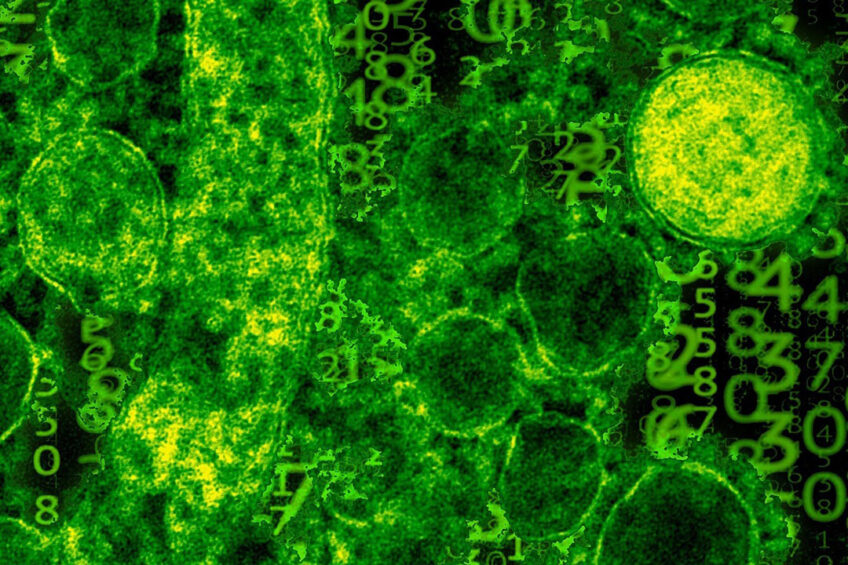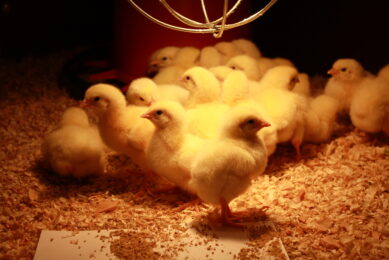Poultry breeding stocks likely source of Salmonella

Researchers at the University of Georgia suggest the likely origins behind the global spread of Salmonella Enteritidis originated in poultry breeding stocks.
Salmonella Enteritidis has caused recurring outbreaks of the foodborne pandemic linked to poultry products. Using hypothesis-driven data mining, the University of Georgia’s (UGA) Center for Food Safety research team analysed over 30,000 genomes of Salmonella Enteritidis obtained from global sources and the international trade of live poultry over 5 decades.
The team concluded that the spread likely originated in poultry breeding stocks, or the progenitors chosen to produce future generations of chickens.
According to UGA, increases of Salmonella Enteritidis infections in the 1980s linked to poultry products occurred simultaneously in America and Europe. The pathogen soon reached other continents at a pandemic scale.
Largest Salmonella outbreak in Europe
“From 2015-18, the largest Salmonella outbreak ever recorded in Europe occurred across 16 countries due to contaminated eggs. Yet the source, how the bacteria rapidly spread across continents decades ago, and how it caused large outbreaks in recent years remained a historical puzzle,” states UGA.
Xiangyu Deng led the UGA research team, which set out to “solve the mystery of the Salmonella Enteritidis pandemic”. The team analysed how the poultry production industry has changed over the past 80 years.
‘The chicken of tomorrow’
In 1948 and 1951, chicken was not a main source of protein because the birds were quite small, says UGA. ‘The Chicken of Tomorrow’ contests were held in the US to improve poultry breeding stocks. Several breeders emerged and, over time, consolidated through mergers and acquisitions.
Farm Report: How Dutch broiler farmer eradicates Salmonella
A Dutch broiler farmer got rid of a persistent Salmonella infection by applying multiple measures, including filling cracks and seams and placing beetle strips, together with consistent cleaning, disinfection and sampling after each flock. Read more…
By the late 2000s, only a few sizable breeding groups remained resulting in highly centralised sourcing and massive international trade of breeding stocks. The researchers hypothesised that Salmonella Enteritidis-infected poultry breeding stocks would be the simplest explanation for the synchronised and expansive spread of the illness.
Genetically near-identical breeding stock
The research team gathered and analysed vast amounts of data from various sources using publicly available Salmonella genomes as well as decades’ worth of international trade data of live poultry. Recent isolates from domestically raised poultry in the US and Suriname were “genetically near-identical, they said, noting that this was significant because the most likely overlap in poultry production systems between the 2 countries is breeding stock supply.
In light of expanded genomic investigations to global populations of Salmonella Enteritidis, and through the reconstruction of evolutionary history and population dynamics of the pathogen, the team found that the global dispersal of the poultry pathogens likely had centralised origins.
Prospective monitoring and intervention
The study also offers clues for prospective monitoring and intervention for emerging pathogens in poultry. “Poultry production is a notable venue for repeated emergence of additional Salmonella strains,” Deng explained. “Despite decades of significant progress of Salmonella control in poultry, the evidence provided here calls for further investigation and potential intervention into the global spread of Salmonella from centralised origins at the pinnacle of poultry production.”
‘Global spread of Salmonella Enteritidis via centralised sourcing and international trade of poultry breeding stocks’ is available in the Nature Communications journal.
Join 31,000+ subscribers
Subscribe to our newsletter to stay updated about all the need-to-know content in the poultry sector, three times a week. Beheer
Beheer








 WP Admin
WP Admin  Bewerk bericht
Bewerk bericht